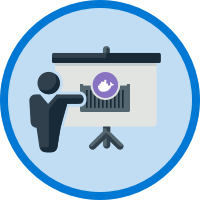Introduction to Kubernetes on Azure
At a glance
-
Level
-
Skill
-
Product
-
Subject
Learn about the basics of Docker containers, container orchestration with Kubernetes, and managed clusters on Azure Kubernetes Service.
This learning path is part of a series. You can choose the topics you're most interested in or progress through each of them. Below are the learning paths in this series.
Part 1: Introduction to Kubernetes on Azure
Prerequisites
None
Get started with Azure
Choose the Azure account that's right for you. Pay as you go or try Azure free for up to 30 days. Sign up.
Achievement Code
Would you like to request an achievement code?
Modules in this learning path
Describe the benefits of using Docker containers as a containerization platform. Discuss the infrastructure provided by the Docker platform.
Determine the types of business problems that you can solve by using Kubernetes. Describe the benefits of container orchestration with features like deployment management, automatic updates, and self-healing.
Determine the types of business problems that can be solved using Azure Kubernetes Service. Describe the benefits of container orchestration with features like deployment management, automatic updates, and self-healing.
Rapidly deploy a containerized application hosted on Azure Container Services or any other registrar to Azure Kubernetes Service by using declarative manifest files.
